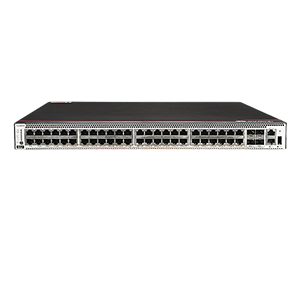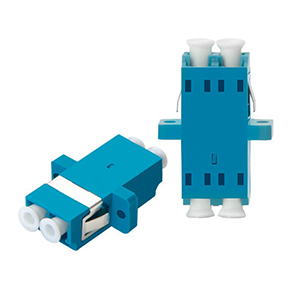In this article, I’ll dive into the benefits and considerations of Stackable Ethernet Switches. We will introduce the definition, working principle and difference of Stackable Ethernet Switches from traditional non-stackable Switches. By understanding the advantages of Stackable Switches in terms of network scalability, high availability and redundancy, simplified management and centralized control, and performance and bandwidth management, you will be able to realize why Stackable Ethernet Switches are ideal for meeting growing network needs. choose. Let’s explore the remarkable capabilities of Stackable Switches and the huge benefits they can bring to your network architecture!
What are Stackable Ethernet Switches
-
Definition and working principle:
A stacked Ethernet switch is a network device that combines multiple switches into a logical unit through stacking technology. They can be viewed as a single large switch, providing greater flexibility and scalability. Stacked switches are connected to each other through specific stacking links to form a high-performance switch cluster. They share configuration information, management functions and bandwidth to achieve high bandwidth, high throughput and redundancy.
Differences from traditional non-stacked switches:
- Scalability: Stacked switches allow multiple switches to be connected together to form a logical unit, providing more ports and bandwidth to meet growing network needs. Traditional non-stackable switches can only be expanded through additional links or upper-level switches, limiting available ports and total bandwidth.
- Management: Stacked switches can be managed centrally, configuring and monitoring the entire stack through a management IP address and a management interface. Traditional non-stacked switches require independent management and configuration of each switch, and the operation is relatively independent.
- Redundancy: Stacked switches can implement redundant configurations and provide redundancy through multiple physical switches to ensure high network availability. Traditional non-stackable switches often require additional redundancy protocols and links to achieve redundancy.
Basic composition and topology:
- Stacking Link: A stacking link is a physical link connecting stacked switches, and is usually connected using a special stacking port. Stacking links provide high-bandwidth and low-latency interconnects, allowing data and control information to be shared between switches.
- Master Switch: In a stack, one switch is designated as the master switch and is responsible for managing the entire stack. The master switch usually has higher processing power and more functions, including stacking configuration, link aggregation, virtual LAN (VLAN) settings, etc.
- Member Switch: A slave switch is another switch connected to the master switch. They communicate with the master switch over stacking links and forward data to target devices.
Stackable Ethernet switches provide higher scalability, centralized management, and redundancy through stacking technology. Their basic components include stacking links, master switches and slave switches, forming a high-performance switch cluster. This topology makes stacked switches ideal for building large networks and meeting high bandwidth needs.
Flexible network expansion capabilities
Flexible network expansion capability is an important advantage of Stackable Ethernet Switches. The following will discuss its advantages in network expansion and explain how they achieve flexible port expansion through stacking connections, and how to achieve flexible port expansion through stacking connections. Convenience for growing network demands:
Advantages:
- Port expansion: Stacked switches allow multiple switches to be connected together to form a logical unit, providing more ports. With stacked connections, administrators can gradually increase the number of switches as needed to meet growing network demands without having to replace the entire switch device.
- Bandwidth expansion: Stacked switches are connected through stacking links to share bandwidth and throughput. This means data can be transmitted in parallel between multiple stacked switches, providing higher overall bandwidth. When the bandwidth of a switch is insufficient, administrators can increase the total bandwidth by adding more switches to achieve flexible bandwidth expansion.
- Simplified management: Stacked switches can be managed centrally, and the entire stack can be configured and monitored through one management IP address and one management interface. This simplifies network management, allowing administrators to centrally manage the entire stack through a unified interface, rather than having to manage and configure each switch individually.
Stacking connection implements port expansion:
- Stacking link: A stacking link is a physical link connecting stacked switches, and is usually connected using a special stacking port. Through stacking links, switches can communicate directly with each other and treat the switches in the stack as a whole. In this way, administrators can use multiple switch ports to expand the network to form a logically larger switch.
- Single management domain: Through stacking connections, stacked switches can share configuration information and management functions. Administrators only need to configure on the master switch, and the configuration information will be automatically propagated to the slave switches to achieve a unified management domain. This makes port expansion and configuration easier, and administrators only need to focus on the master switch rather than configuring each switch individually.
Convenience to meet growing network needs:
- Flexibility: The flexibility of stacked switches makes network expansion easy. By adding additional switches, administrators can gradually expand the network based on demand without the need for large-scale equipment replacement, saving time and costs.
- Scalability: Stackable switches provide a highly scalable solution. Because stacked switches share bandwidth and configuration information, more switches can be easily added to meet growing network demands. This scalability makes stackable switches particularly popular in large enterprises, data centers, and growing networks.
In short, stacked Ethernet switches have flexible network expansion capabilities and realize port expansion and bandwidth expansion through stacking connections. Their management simplicity and scalability make it easier to meet growing network demands. Whether extending an existing network or building a new network architecture, stackable switches provide a flexible solution.
High availability and redundancy
High availability and redundancy are important advantages of Stackable Ethernet Switches in the network. The following will introduce their advantages in providing high availability and redundancy and explain how they use redundancy. Link and stack backup realize network redundancy, while emphasizing the importance of stacked switches in critical business and fault recovery:
Advantages:
- High availability: Stacked switches provide a high-availability network environment through redundant configuration and backup. They can maintain network connectivity when a single device or link fails, reducing the risk of business interruption.
- Redundancy: Stacked switches allow administrators to configure redundant links and backup devices to ensure redundant paths and backup switches in the network. In this way, if a link or device fails, data traffic can be transmitted through the backup path or backup device to ensure network connectivity and data reliability.
Redundant links and stack backup achieve network redundancy:
- Redundant links: By setting up redundant links between stacked switches, redundant paths can be provided to transmit data. When the primary link fails, data can continue to be transmitted through the backup link to ensure network connectivity. Redundant links can be implemented using link aggregation technology, which bundles multiple physical links into one logical link to provide higher bandwidth and redundancy.
- Stacked backup: Stacked switches allow administrators to configure backup devices that can take over network functions if the primary switch fails. The backup device is usually in a slave state in the stack. When the main switch fails, the backup device will automatically take over the functions of the main switch and continue to provide network services. This stacked backup mechanism ensures network continuity and reliability.
Importance of critical business and failure recovery:
- Critical business: In the modern network environment, many organizations and enterprises rely on the network to run critical businesses. The high availability and redundancy of stacked switches ensure the continuity of key services, reduce the risk of business interruption and data loss, and improve business stability and reliability.
- Failure recovery: When network equipment or links fail, the redundant configuration and backup equipment of stacked switches can quickly respond and restore network functions. This reduces the impact of failures on network performance and user experience, and reduces troubleshooting and recovery time.
In short, stacked Ethernet switches provide high availability and redundancy through redundant links and stack backup to ensure network connectivity and reliability. In terms of critical business and fault recovery, the functions of stacked switches are crucial, helping organizations and enterprises maintain a highly available network environment and quickly respond to failure situations to ensure business continuity and stability.
Simplified management and centralized control
Simplified management and centralized control are the benefits of stackable Ethernet Switches in network management. Below we explore their benefits and explain how stacked connections enable centralized management and control. Also, provides an overview of stack management tools and features:
Benefits:
- Simplified management: Stacked switches allow administrators to configure, monitor and manage the entire stack through a centralized management interface. This simplifies network management, allowing administrators to use a unified interface to manage the entire stack rather than having to manage each switch individually.
- Centralized control: Through stack connections, stacked switches can form a logical unit, and administrators can centrally control the entire stack. This means administrators can apply a single command or setting across the entire stack and ensure that these configurations take effect consistently across the entire stack, simplifying the configuration and control process.
Stacked connections enable centralized management and control:
- Logical unit: Stacked switches are connected through stacks to form a logical unit, and multiple switches are treated as a whole. This allows administrators to manage and control the entire stack as a single entity without having to configure and manage each switch individually.
- Centralized management interface: Stacked switches usually provide a centralized management interface through which administrators can configure and monitor the entire stack. This management interface can provide a graphical interface (GUI) or a command line interface (CLI), allowing administrators to easily perform network management operations.
Overview of stack management tools and features:
- Stack configuration: Stacked switches provide specific configuration options that allow administrators to configure stack connections, redundant links, stack backup and other functions. Through these configuration options, administrators can flexibly configure and adjust the stack as needed.
- Stack monitoring: Stacked switches usually provide stack monitoring functions, allowing administrators to monitor the status, performance, and connectivity of the entire stack. This enables administrators to promptly detect and resolve any issues in the stack.
- Configuration synchronization: Stacked switches can implement configuration synchronization, that is, propagating configuration information from the master switch to the slave switches to ensure configuration consistency in the entire stack. In this way, administrators only need to configure on the master switch, and the configuration information will be automatically synchronized to other switches in the entire stack.
- Event notification: Stacked switches can provide event notification functions. When important events or failures occur in the stack, administrators can receive notifications and take appropriate measures in a timely manner.
- Stack diagnostics: Stacked switches usually provide stack diagnostic tools to identify and solve problems in the stack. These tools can help administrators quickly locate and troubleshoot stack faults, improving troubleshooting efficiency.
In short, stacked Ethernet switches realize centralized management and centralized control through stacking connections, simplifying network management work. The stack management tools and functions provided enable administrators to easily configure, monitor and maintain the entire stack, ensuring the normal operation and efficient management of the network.
Performance and bandwidth management
Stackable Ethernet Switches offer several advantages in performance and bandwidth management. These benefits are described below and the impact of stacked connections on data transfer speeds and bandwidth allocation is discussed. At the same time, it emphasizes the performance advantages of stacked switches in meeting high-demand network applications:
Performance and bandwidth management benefits:
- High throughput: Stacked switches usually have high throughput characteristics and can handle large amounts of data traffic. This makes them suitable for application scenarios that require high bandwidth and fast data transmission, such as data centers, enterprise-level networks, etc.
- Low latency: Stacked switches generally have low transmission latency, enabling fast data transmission and response. Low latency is very important for real-time applications and delay-sensitive services, such as real-time video transmission, voice communications, etc.
- High-speed switching matrix: Stacked switches usually use high-speed switching matrix, which can provide fast data forwarding and processing capabilities. This means they can support high-speed data exchange in large-scale networks, ensuring fast transmission and processing of data.
The impact of stacked connections on data transfer speed and bandwidth allocation:
- Data transmission speed: Stacking connections connect multiple switches through high-bandwidth stacking links to achieve fast data transmission speeds. Compared with ordinary uplinks, stacking links have higher bandwidth and throughput and can meet the needs of large-scale data transmission.
- Bandwidth allocation: Stacked switches can flexibly manage and allocate bandwidth resources. Administrators can allocate bandwidth to switches and links in the stack according to needs to ensure that critical services and applications can obtain sufficient bandwidth resources. This flexibility and adjustability of bandwidth allocation helps optimize network performance and meet different business needs.
The performance advantages of Stackable Switches in meeting high-demand network applications:
- Large-scale networks: Stacked switches are suitable for large-scale network environments and can handle large amounts of data traffic and connections. They have high performance and high scalability, and can meet scenarios with high network performance and bandwidth requirements such as large organizations and data centers.
- High-density deployment: Stacked switches often offer multiple ports and high-density port deployment options. This enables them to support a large number of device connections and provide sufficient bandwidth to meet the needs of these devices, making them suitable for scenarios that require large-scale device connections and high bandwidth.
- High reliability: Stacked switches usually have configuration options for redundant links and backup devices to improve the reliability and fault tolerance of the network. This is very important for applications with mission-critical and high-availability requirements, ensuring network connectivity and data reliability.
To sum up, stacked Ethernet switches have advantages in performance and bandwidth management, and can provide high throughput, low latency and high-speed switching capabilities. Stacking connections enable fast data transmission through high-bandwidth stacking links and allow administrators to flexibly manage and allocate bandwidth resources according to needs. In terms of meeting high-demand network applications, stacked switches have the characteristics of high performance, high scalability and high reliability, and can cope with the needs of large-scale network environments, high-density deployment and key services.
Overview:
Thank you for reading our blog! Through the discussion in this article, you have a more comprehensive understanding of the benefits and precautions of Stackable Ethernet Switches. Stackable Ethernet Switches provide flexible network expansion capabilities through its unique stacking connection method. You can easily achieve flexible expansion of ports through stacking connections to meet growing network demands and make your network architecture more scalable and adaptable.
We provide high-quality Stackable Ethernet Switches products to meet your network architecture needs. By choosing our products, you get flexible network scalability, high availability and redundancy, simplified management and centralized control, and superior performance and bandwidth management.
Stackable Ethernet Switches FAQ
Using stackable Ethernet switches offers several benefits, including increased scalability, simplified management, improved network performance, higher availability through redundancy, and easier expansion of network capacity.
Stackable switches are interconnected using special high-speed stacking cables or interfaces provided by the switch manufacturer. These connections create a high-bandwidth backplane or ring that allows for seamless communication between the switches in the stack.
The maximum number of switches that can be stacked together depends on the specific switch models and the stacking technology used. Stackable switches can typically support stacking of two to several dozen switches.
In most cases, stackable switches from the same manufacturer and product family can be stacked together. However, mixing different switch models or brands in a stack may not be supported or may require specific compatibility considerations. It is recommended to consult the manufacturer’s documentation for compatibility information.
Stackable switches are managed as a single entity, with a single management IP address and a unified management interface. Administrators can configure and monitor the entire stack from a central management console, simplifying network administration.
Stackable switches offer advantages over traditional standalone switches by providing higher port density, centralized management, simplified cabling, improved performance through high-speed stacking, and the ability to scale the network easily by adding or removing switches from the stack.
Yes, stackable switches can be used to achieve high availability or redundancy in the network. By creating a stack, redundant links and power supplies can be utilized, ensuring that if one switch or link fails, the network continues to operate seamlessly.
While stackable switches provide numerous benefits, there are a few considerations to keep in mind. These include the need for compatible switch models, potential limitations in stack size or stacking technology, and the requirement for proper configuration and management to ensure optimal performance.
Choosing the right stackable switch involves evaluating factors such as the required port density, desired stacking capacity, required features (such as PoE support or advanced management capabilities), compatibility with existing network infrastructure, and future scalability needs. Consulting with network professionals or vendors can help determine the most suitable stackable switch for your network requirements.



